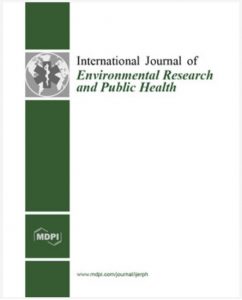Publications

Differences in Medial and Lateral Gastrocnemius Stiffness after Exercise-Induced Muscle Fatigue
Authors: Prarthana Sanya Lall 1, Abdulrahman M. Alsubiheen 2, Mishal M. Aldaihan 2, Hanuel Lee 1, 3
Affiliations:
- Graduate School, Department of Physical Therapy, College of Health Science, Gachon University, Incheon 21936, Korea
- Department of Rehabilitation Sciences, College of Applied Medical Sciences, King Saud University, Riyadh 11451, Saudi Arabia
- Department of Physical Therapy, College of Health Science, Gachon University, Incheon 21936, Korea
Journal: International Journal of Environmental Research and Public Health - October 2022, Volume 19, Issue 21, Article no. 13891 (DOI: 10.3390/ijerph192113891)
-
Field & Applications:
- Sport
- Fatigue / Overtraining
- Muscle development / Performance
Muscles are affected at the cellular level by exercised-induced fatigue, inducing changes in their stiffness. Examining muscle stiffness can improve the knowledge of various pathologic conditions, such as pain and injury.
The objective of this study was to examine the stiffness of the medial gastrocnemius (MG) muscle and the lateral gastrocnemius (LG) muscle to determine the changes in stiffness, and to assess the differences in the stiffness between the MG and the LG, as affected by muscle fatigue measured using shear wave elastography (SWE) and a MyotonPRO after inducing muscle fatigue.
A total of 35 healthy young adults participated in the study. The stiffness of the MG and the LG were assessed before and after a muscle fatigue protocol (MFP), which included three sets of 50 eccentric contractions of the calf muscles of the dominant leg, at rest, and at maximum voluntary contraction (MVC). The measurements were taken with SWE and the MyotonPRO simultaneously.
Compared to baseline, the resting stiffness of the MG and the LG significantly increased immediately, 24 h, and 48 h after muscle fatigue (p < 0.05); however, during MVC, the stiffness of the MG decreased (p < 0.05) and that of the LG showed no change (p > 0.05). When the stiffness of the MG and the LG were compared before and after the MFP, changes in the stiffness of the MG were significantly greater than those in the LG (p < 0.05). This signifies that the MG was more affected by the exercise-induced muscle fatigue than was the LG.
The assessment of musculoskeletal tissue and its characteristics, before and after eccentric exercise, is crucial in the prevention of overuse injuries associated with repeated exposure to both low and high levels of force.
Keywords: eccentric exercise, muscle fatigue, myotonometer, stiffness, shear wave elastography
Muscle fatigue is a common phenomenon that affects both athletic performance and the performance of various other activities. In this study, the stiffness of the MG decreased, and that of the LG showed no change. Therefore, the measurement of stiffness can strengthen the understanding of muscle fatigue and the changes it causes to the muscle itself. The assessment of musculoskeletal tissue and its characteristics before and after eccentric exercises is crucial in the prevention of overuse injuries associated with repeated exposure to low or high levels of force. It can provide background information that is important for developing effective training strategies. Overall, the results of our study may have relevant applications for elite sports practice and for musculoskeletal rehabilitation.


